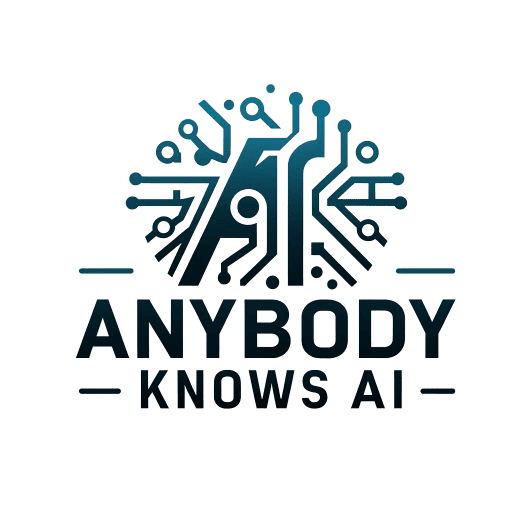Are you seeking the most effective path to AI integration in your industry? This article outlines the best strategies for integrating AI in traditional industries, from assessing readiness to tangible implementation tactics.
Walk away with a clear plan for infusing AI into your business, translating advanced technology into practical, competitive advancements. Start paving your way toward a more intelligent business model, informed by concrete steps and expert advice.
Key Takeaways
- Effective AI integration requires a thoughtful blueprint aligning with business goals, identifying impactful opportunities, setting achievable AI objectives, and prioritizing projects based on potential ROI.
- Operational efficiency in traditional industries can be significantly improved through AI by streamlining processes, fostering employee adoption of AI tools, and building a robust data infrastructure that ensures quality data collection and enables advanced analytics.
- Ongoing assessment and refinement of AI strategies are essential for success, involving setting precise KPIs, periodically analyzing AI performance, and ensuring legal and ethical compliance while navigating business and customer data sensitivities.
Table summarizing the best strategies for integrating AI into traditional industries in 2024, compiled from the latest research and expert insights:
| Strategy | Description | Benefits | Source |
|---|---|---|---|
| Define Clear Objectives | Start by understanding specific problems AI can solve, focusing on user needs and operational gaps. | Aligns AI efforts with business goals | Microsoft Community Hub, Brickclay |
| Data Quality and Accessibility | Ensure access to high-quality, clean data to feed AI systems underpinned by robust data governance. | Enhances model accuracy and efficiency | AI Demand, Brickclay |
| Integration with Existing Systems | Smoothly incorporate AI into current infrastructure to avoid disruption. | Minimizes integration issues | Brickclay |
| Strategic AI Deployment | Phased and thoughtful integration of AI, starting with pilot projects. | Allows scalability and manageable implementation | ValueCoders, Brickclay |
| Employee Training and Engagement | Develop comprehensive training programs for technical and non-technical staff, emphasizing the benefits of AI and fostering a supportive culture for adaptation. | Builds AI literacy and reduces resistance | AI Demand, Emerald Insight |
| Ethical and Legal Compliance | Ensure that AI applications adhere to legal standards and ethical considerations, especially regarding data privacy and bias. | Safeguards against legal and reputational risks | Brickclay, ValueCoders |
| Continuous Learning and Adaptation | Maintain an ongoing learning environment to keep up with AI advancements and ensure continuous improvement of AI applications. | Keeps AI capabilities relevant and effective | Brickclay, ValueCoders |
These strategies, drawn from multiple authoritative sources, provide a roadmap for businesses in traditional industries to effectively incorporate AI technologies in 2024, maximizing their potential while navigating associated challenges.
Crafting the Blueprint for AI Integration

As a seasoned architect wouldn’t begin a construction project without a blueprint, integrating AI into traditional business operations requires careful planning. A seamless transition can be achieved by aligning AI initiatives with broader business objectives.
But how can businesses assess their industry’s readiness for AI, identify high-impact opportunities, and set achievable goals?
Assessing Your Industry’s AI Readiness
The first step in the AI journey is understanding the status quo. It’s like a health check-up before embarking on an intense fitness program. Many companies are in the early stages of AI adoption, primarily using AI to analyze large data sets and inform decision-making processes. However, significant potential and challenges exist, such as data privacy concerns and the integration of AI with legacy systems.
Valuable insights can be gleaned by studying other analogous industries that have seen efficiency improvements and enhanced customer experiences through AI, leading to a competitive advantage.
Identifying High-Impact Opportunities
After assessing your industry’s AI readiness, the next step is identifying areas where AI can make the most significant impact. It’s like a gold miner seeking the most lucrative veins of gold.
In marketing, product development, and sales, AI integration can translate customer feedback into actionable insights, optimizing strategy and product development. AI tools can provide a competitive edge by proactively identifying lucrative deals and staying abreast of industry trends.
Custom AI applications in computer vision and predictive maintenance are increasingly prevalent, transforming traditional sectors.
Setting Achievable AI Goals
Once areas for AI intervention are identified, the next step is establishing clear objectives. Similar to setting goals for a marathon, AI goals should be achievable and aligned with the broader business objectives. Selecting the right Key Performance Indicators (KPIs) for AI initiatives is crucial for tracking progress and measuring success.
When evaluating the Return on Investment (ROI) from AI, consider immediate financial outcomes and efficiency gains, improved decision-making, enhanced market positioning, and the potential for competitive advantages. It’s also essential to consider the long-term impact of AI, which may involve costs for data acquisition, model development, and AI system maintenance.
Pioneering AI Adoption in Traditional Workflows

With the blueprint ready, the construction phase can commence. Integrating AI into traditional workflows involves using intelligent algorithms and machine learning to automate repetitive tasks, derive insights from data, and assist in prudent decision-making. Much like a well-oiled machine, AI can significantly reduce operating costs by increasing efficiency and reducing reliance on manual processes.
How can businesses prioritize AI projects, make operations more efficient, and encourage employee adoption?
Prioritizing AI Projects
The process of prioritizing AI projects can be compared to a chess player deciding their next move. The decision should consider each option’s potential financial and strategic ROI. The benefits of AI-driven process enhancements are core factors in evaluating their likely impact. Yet, implementing AI may require substantial investments, posing a significant barrier for companies with financial constraints.
Furthermore, integrating AI with legacy systems presents unique challenges, necessitating special considerations for successful AI adoption.
Streamlining Operations with AI
After prioritizing AI projects, the next step is to incorporate them into operations, similar to adding a new gear to a well-functioning machine. AI enhances productivity by automating repetitive tasks, freeing talent for strategic activities, and providing tailored recommendations. AI-driven workflows can improve functions like document drafting in legal settings and supporting agents in contact centers, thereby streamlining operations.
But, for AI to scale with the business effectively, data infrastructures must support the rapid transition from AI training phases to real-time applications.
Fostering Employee AI Adoption
Successfully integrating AI into workflows is just part of the challenge. The other part involves getting the employees on board, like persuading a ship crew to venture in a new direction. The gradual introduction of AI tools assists in preventing employee overwhelm, and selecting user-friendly tools facilitates interdisciplinary collaboration.
Fostering a culture of experimentation enables employees to understand AI tools better, leading to a greater appreciation of their potential benefits for the business. Tracking performance metrics reflecting reduced downtime, scalability, and employee satisfaction after AI integration is also essential.
Leveraging Data for AI Success

Data is to AI what fuel is to a car. AI algorithms power informed decision-making by analyzing a tremendous amount of real-time data, offering data-based insights. Traditional businesses can leverage AI’s capability to analyze vast amounts of structured and unstructured data, identifying trends and uncovering actionable insights.
What steps can businesses take to build robust data infrastructure, ensure quality data collection, and unlock insights with advanced analytics?
Building Robust Data Infrastructure
Building a robust data infrastructure for AI can be compared to laying a strong foundation for a building. AI-native data infrastructures are designed for scalability, allowing horizontal expansion to manage growing data volumes and providing flexibility for diverse AI data types and varying AI task requirements.
High computational performance and low latency are essential to generate insights promptly.
Ensuring Quality Data Collection
Accurate AI models hinge on quality data. AI could yield incorrect results, misleading analyses, and biased decisions without it. Poor data quality poses a substantial financial burden, with US businesses incurring billions annually in costs to correct errors.
Data cleaning is thus an essential, iterative procedure that enhances datasets by identifying and amending errors and inconsistencies. Adhering to ethical data extraction practices ensures the integrity and quality of the collected data.
Unlocking Insights with Advanced Analytics
Correctly analyzing data can unlock a wealth of insights. AI enhances the decision-making process by offering data-based insights and forecasts. In marketing, AI can:
- Automate tasks
- Analyze customer data
- Generate personalized content
- Streamline efforts to produce superior outcomes
AI also analyzes market dynamics, competitor pricing, and customer behavior to recommend optimal pricing points, optimizing pricing strategy for traditional businesses.
Another noteworthy use case is conversation intelligence, an AI-driven solution that uses natural language processing in workflows involving categorization and scoring to analyze customer interactions and provide valuable insights.
Customizing AI Tools for Your Business Needs

AI is not a universal solution. It should be tailored to the unique needs of different businesses. When selecting AI tools for marketing or other business needs, it is essential to consider factors such as:
- The features offered
- The capabilities of the tools
- Pricing structures
- Ease of use
This will ensure alignment with business goals.
What steps can businesses take to select, tailor, and integrate AI tools based on their specific requirements?
Selecting AI Tools
Choosing the right AI tool for a business can be compared to a chef selecting the right ingredients for a dish. The specific goals for AI, business needs, and potential areas for automation or data analysis should guide this selection. Researching the variety of AI tools on the market, focusing on features, functionalities, integration capabilities, and scalability is essential.
Evaluating the costs associated with adopting AI tools includes considering initial investment and ongoing expenses to ensure a favorable return on investment. AI tool vendors’ reputation and customer support should be assessed by reading reviews and seeking feedback from other businesses.
Tailoring AI Solutions
After selecting the right AI tools, they must be customized to meet the business’s needs, similar to a suit-fitting suit. Custom AI development entails adapting existing software or creating novel solutions from scratch to address the unique needs of a business. AI solutions can be tailored for specific department goals to improve areas such as:
- customer experience
- sales
- product development
- marketing strategies
But, it’s also essential to incorporate human expertise in AI development to enhance data quality and address domain-specific biases and inconsistencies.
Integrating AI with Legacy Systems
Integrating AI with legacy systems can be as complex as fitting a square peg in a round hole. Challenges often arise due to:
- Outdated technologies in existing infrastructures
- Evaluating the technical capabilities of legacy systems and potential AI tools is crucial for successful integration and compatibility.
- Tailoring off-the-shelf AI solutions to utilize them with legacy systems effectively can be time-intensive but necessary for successful deployment.
One significant hurdle in AI integration is data migration, often involving complex data transition from outdated legacy system formats to AI-ready platforms.
Measuring AI Impact and Refining Strategies

Integrating AI into a business is a dynamic process that demands constant attention, updates, maintenance, and adaptation for success. It’s a continuous process of measurement, analysis, and refinement.
Key performance indicators (KPIs) are essential for monitoring the effectiveness of AI integration. Efficiency, accuracy, performance, and financial impact are broad categories of metrics, while specific KPIs include conversion rates, engagement rates, customer satisfaction scores, and ROI.
How can businesses set KPIs, evaluate AI performance, and enhance AI strategies?
Establishing KPIs for AI Initiatives
Setting KPIs for AI initiatives can be likened to a sniper-defining target. Without a clear target, it’s hard to measure success.
Here are some steps to follow when setting KPIs for AI initiatives:
- Identify specific AI applications.
- Establish clear objectives.
- Define performance goals.
- Determine key performance indicators.
Following these steps, you can effectively integrate AI into your business and measure its success.
Businesses should continuously monitor AI outcomes against established performance goals and key performance indicators to track the success of AI integration. Continuous measurement and adjustment of AI initiatives are necessary to stay current with evolving technology and business operations.
Analyzing AI Performance
Evaluating AI performance can be compared to a coach assessing a player’s performance. The goal is to identify areas of strength and areas that need improvement. Performance metrics are critical for determining an AI system’s functionality, informing stakeholders of its capability, and guiding future developments.
Core performance metrics for AI include:
- Accuracy
- Precision
- Recall
- F1 score
Each metric provides different insights into the AI’s decision-making process. Benchmarking AI performance involves comparing the system’s results to predefined standards or outcomes from other AI systems.
Continuous Improvement of AI Strategies
Consistently improving AI strategies is akin to a gardener pruning and nurturing a plant for healthy growth. Incorporating feedback from stakeholders is crucial for the iterative refinement of AI applications, ensuring their continuous improvement and alignment with evolving user needs and expectations.
It’s important to maintain flexibility in the metrics used to evaluate AI performance to sustain innovation and growth, as this allows the system to adapt effectively to dynamic business landscapes.
Navigating Legal and Ethical Terrain
Dealing with AI’s legal and ethical aspects can be as challenging as steering a ship through stormy waters. AI systems must comply with data protection regulations, protect sensitive business information, and adhere to legal standards.
It’s also critical to provide comprehensive training on the responsible use of AI tools to prevent discrimination and bias and to uphold transparent and fair AI applications.
Investing in data governance is critical to correctly managing AI data, mitigating risks, and building trust in AI applications. When using AI, navigating legal obligations such as protecting intellectual property and ensuring client confidentiality is imperative.
Transformative AI Case Studies in Traditional Sectors
Seeing is believing. Here are some case studies of how AI has transformed traditional sectors. In industrial automation, 3D vision technology facilitated by AI has improved operations by guiding robots to handle tasks such as picking and placing components more efficiently. AI-powered autonomous earth-moving robots in the construction industry have improved operational efficiency and on-site productivity.
In the agricultural sector, AI-driven innovations have significantly contributed to more sustainable crop protection strategies, leading to higher yields and economic benefits for farmers.
Preparing for Future AI Trends
AI, also known as artificial intelligence, is more than just a current trend; it is indeed the future. AI technologies enable traditional sectors to develop intelligent products and services that quickly adapt to consumer needs and behavioral time.
Through AI-driven personalization, traditional industries can deliver personalized experiences and targeted marketing campaigns that have the potential to increase incremental revenue by 10%-20%.
The prospects of AI in traditional businesses include greater automation, enhanced predictive capabilities through predictive analytics, and improved customer experiences.
Overview
As we’ve seen, AI is not just a buzzword; it’s a powerful tool that can transform traditional businesses. By crafting a blueprint for AI integration, pioneering AI adoption in conventional workflows, leveraging data for AI success, customizing AI tools for business needs, measuring AI impact, refining strategies, navigating legal and ethical terrain, and preparing for future AI trends, businesses can leverage AI to enhance their operations and stay competitive.
Frequently Asked Questions
How can I assess my industry’s readiness for AI?
To assess your industry’s readiness for AI, start by understanding the current state of AI adoption, identifying potential integration challenges, and learning from successful implementations in similar sectors. This will provide valuable insights into your industry’s readiness for AI.
What considerations should I consider when selecting AI tools for my business?
Consider the features, capabilities, pricing, reputation of vendors, and ease of use when selecting AI tools for your business to ensure they align with your goals.
How can I ensure the successful integration of AI into my business workflows?
To ensure successful integration of AI into your business workflows, prioritize AI projects based on potential ROI, streamline operations by automating repetitive tasks, and foster employee adoption of AI to augment productivity. This approach will help maximize the benefits of AI technology.
How can I measure the impact of AI on my business?
You can measure the impact of AI on your business by using key performance indicators (KPIs) such as efficiency, accuracy, performance, and financial implications. Continuously monitor AI outcomes against established performance goals and make necessary adjustments based on feedback and evolving needs.
What are some legal and ethical considerations in implementing AI?
In implementing AI, it’s crucial to comply with data protection regulations, provide comprehensive training on responsible AI use to prevent bias, invest in data governance, and navigate legal obligations like protecting intellectual property. These measures are essential for ethical and legal AI implementation.







